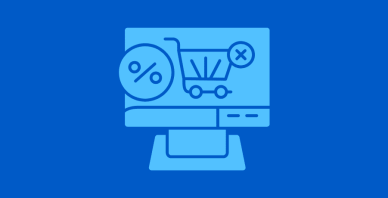Table of Contents
Last update on
This is a guest post. Opinions and recommendations are the author’s own and not necessarily those of WP Rocket.
When you started your business, you surely spent a lot of time designing the website that would attract many visitors and invite your readers to subscribe to your Newsletter and/or buy your services and products.
You probably also focused on giving the best service to your customers and worked hard to get their loyalty.
However, after a while, you realized that it was time to change your website and define well its marketing objectives: traffic acquisition, e-commerce conversion, etc.
If you’ve spent a lot of time working with WordPress, you’ve already developed a sixth sense for what works and what doesn’t: but why rely solely on your gut when you could implement a solution based on certainties?
A/B testing is the technique that takes the guesswork out of the equation, allowing us to make the best possible decisions for the growth of our sites.
Let’s take a look at the basic concepts on which test A/B is based.
What Conversion Rate Is And Why It Matters
When you build a website, you’re looking to achieve those goals that contribute to the acquisition of new customers and build relationships with existing ones: sales, subscriptions, clicks on ads or articles, free quote requests, filling out forms, etc.
And any visitor who accesses your website, browses it, and consumes its content is an opportunity you have to expand your business. You want the visitor to perform that action that will help achieve one of your goals. And that’s why we say that a conversion occurs when a visitor completes a desired objective, such as filling out a form or making a purchase.
Finally, the conversion rate is the ratio between the number of conversions we have on the website and its total number of visitors.
For example, if our website has 1,200 visitors on a certain period of time and there have been 30 conversions on that same period, the conversion rate is 30 / 1,200 = 2,5%.
This means that for every 100 visitors that come to our website, we can assume that there will be between 2 and 3 conversions.
To find out if your conversion rate is good or bad, you might be interested in taking a look at the graphics below where Unbounce analyzed lead generation landing pages across 10 different industries.
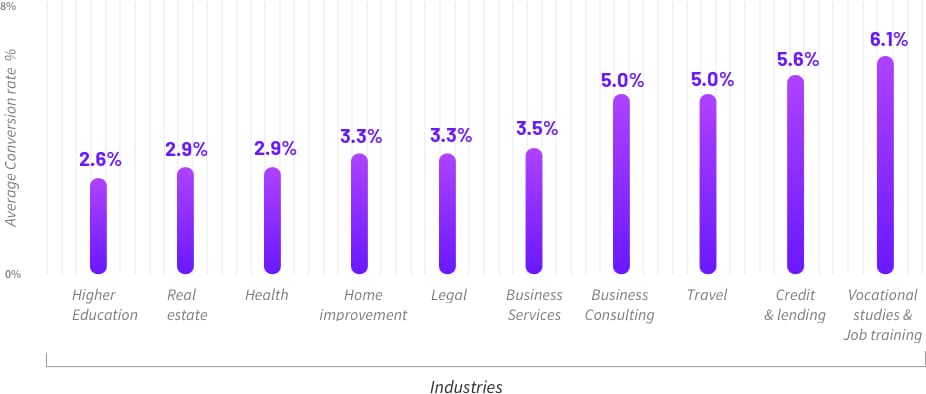
If, as blogger or owner of a website, you could obsess about only one metric, it should be conversion.
No other metric so holistically captures as many critical aspects of a website–user design, usability, performance, convenience, ad effectiveness, net promoter score, customer satisfaction… that is, the whole visitor’s journey experience–in a single measurement.
In other words, Conversion Rate Optimization or CRO means figuring out what users are looking for when they arrive at your site and giving them that.
What A/B Testing Is
One way to optimize your website’s funnel is A/B testing.
It is the best technique to optimize your conversion rate and learn if a change in your own site works better than what you already had.
How does A/B Testing work?
A/B Testing does pretty much what the name suggests: it tests different versions of your website against the current one. In the end, you measure which version was more successful and select that version for real-world use.
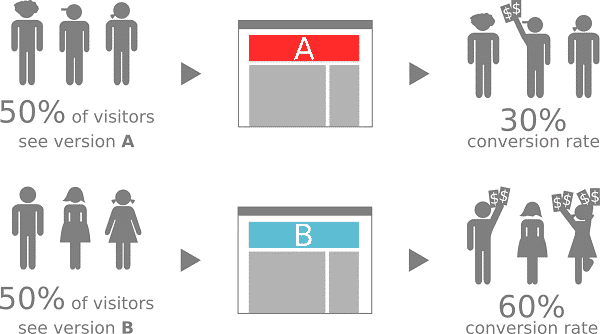
In its simplest form, A/B testing proposes to randomly split the traffic to the site in two groups so that 50% of the visitors see the A design while the other 50% sees the B design.
By monitoring how users in each group react, we can calculate the conversion rate of each group and, in case there is a statistically significant difference between the two, declare a winner design.
The A/B Testing Process
In order to start an A/B testing process we recommend you to follow the following process:
1. Identify Your Goals
What is the purpose of your website? What are the elements in your website that bring you the most overall profit? As we’ve said at the beginning of this post: new sales, new subscriptions, click on ads, fill out contact forms, requesting a free quote, etc.
2. Analyze the Concerns and Motivations of Your Visitors for Taking the Actions to Achieve Your Goals
For each goal, and based on David Skok’s Method, identify the concerns and motivations of your visitors to solve blockage points in the marketing funnel of your visitors. This is, what prevents or motivates them to carry out that action that contributes to reach your goals.
For example, if your goal is to get more filled contact forms, some concerns of your visitors before filling out that form can be: “I hate getting spam emails from vendors” or “Are they going to give my contact data to a third party?” or “I don’t like to fill so many fields.”
In addition, you should also identify or guess the main motivations that will overcome your visitors concerns and will move them forward in the marketing funnel.
For example, in the screenshot below I, as a user, can see that WP Rocket explicitly says what my contact data will be used for and that the form is short and succinct.
3. Formulate a Hypothesis To Improve Your Website
From the two previous steps, you can create hypothesis about what elements of your website you could test to provide better solutions to your customers.
For example: if forms are shorter, I’ll have more visitors that will contact me. Or adding explicit information that no-spam will be sent, will help customers to better trust us.
4. Create A/B Tests
For each hypothesis, create an A/B o multivariate (with multiple alternatives) test that will show your hypothesis. That is, the traffic of your website should be divided so, half of it sees the original alternative and the other half sees the new design.
For example, if you currently have a long contact form in your website, your alternative will show a shorter contact form.
5. Track the Results of the A/B Tests
Give your test enough time to accumulate a decent sample size and ensure your results are statistically significant
6. Improve Your Website By Applying The Best Alternative
Finally, if there is a winner, make sure that this is the only alternative that is shown on your website. Now, you know with real data that your website shows what your visitors prefer!
A/B Testing Tools
As you’ve already guessed, you’ll need a tool to easily perform the last 3 steps of the A/B testing process.
WordPress has incredible tools for A/B testing. Many of these tools are plugins or services that you can install and start using right away. Most of them are easy to use so you don’t need any technical skills.
You can take a look at different lists of tools available on:
- 6 Best WordPress A/B Testing Plugins To Split Test Your Site by Harsh Agrawal,
- 8 Powerful Split Testing Tools To Optimize Your WordPress Site by Colin Newcomer,
- Best WordPress A/B Testing Tools to Optimize Conversion Rate by Brian Jackson
From the different lists, the most flexible WordPress-specific A/B Testing tool is Nelio A/B Testing.
Whereas Thrive Optimize and Simple Page Tester let you test different versions of your content, Nelio A/B Testing lets you test your entire WordPress site.
With Nelio A/B Testing you can test not only pages, posts, and custom post types but also headings, menus, widgets, themes and CSS that may be visualized in all the entire website. And it also includes heatmaps and clickmaps to discover how your visitors behave when navigating and clicking through your website.
With Nelio A/B Testing you can create multiple different tests running on your website. And for each one, you can define your own conversions and goals to track the data that matters.
For example, clicking on a button, visiting a page, submitting a form, etc.
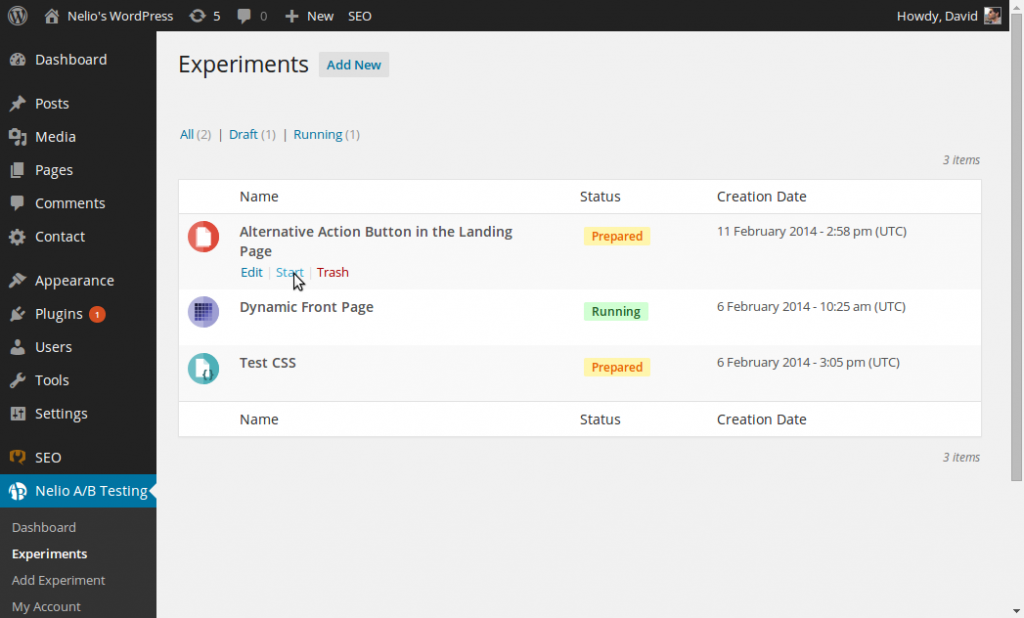
After tracking the evolution of each experiment, once you find a winning variation, you can make that version live just by clicking a button.
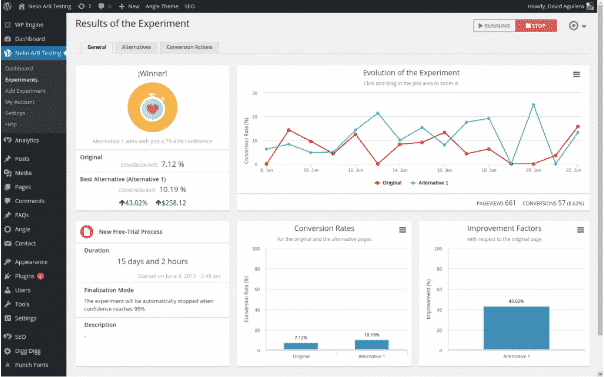
Summary
All websites exist for a reason and have a purpose, a goal. When a visitor fulfills that goal, we say there’s been “a conversion“. If you want to optimize your conversion rate, then A/B testing your web page elements is essential. That includes headlines, graphics, opt-in forms, the content, page layout, and anything that could potentially hinder your sales. And remember, A/B testing is a never-ending process!


